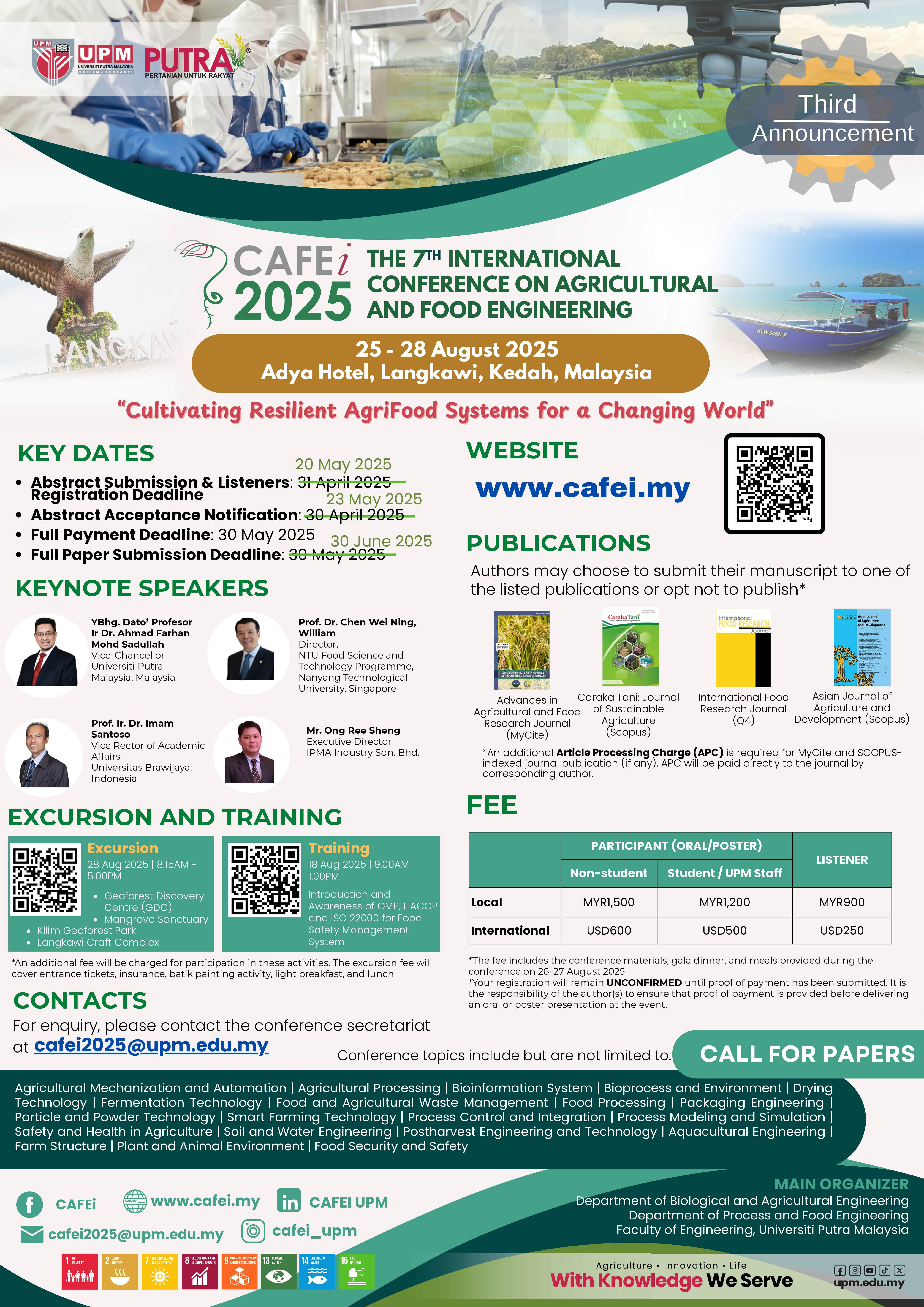Effect of Different Drying Methods on Physical Properties of Azolla pinnata Powder
DOI:
https://doi.org/10.36877/aafrj.a0000356Abstract
Azolla pinnata is a small floating plant that is rich in protein and other nutrients and is suitable for livestock feed. Drying is one of the traditional techniques to preserve food to stay longer in shelf life, besides it is the easiest way and can help in maintaining the properties of the plant or food. There is a lack of information on the physical properties of Azolla pinnata in powder condition. In this study, four different combinations of two drying methods using shade drying as a control variable and oven drying at different temperatures at 40oC, 50oC, and 60oC as the test variable on grinded and non-grinded Azolla were performed. The objective of the study was to determine the effects of different drying methods on the physical properties of Azolla powder containing either grinded or non-grinded Azolla. The results obtained of tapped density, bulk density, Carr's Index (CI), and Hausner ratio values were recorded in Table 1. Based on Table 1, the good value of powder flowability was determined by the values of CI and Hausner ratio. According to results obtained, oven drying at 50oC provided the most suitable drying method to be used because it provides good physical characteristics, especially for grinded Azolla powder.
Downloads
Published
How to Cite
Issue
Section
License
Copyright (c) 2023 NOR AZIATUL AZIDAH AZHARI, ROSNAH SHAMSUDIN, SUSILAWATI KASIM , MOHD SHAMSUL ANUAR

This work is licensed under a Creative Commons Attribution-NonCommercial 4.0 International License.
Author(s) shall retain the copyright of their work and grant the Journal/Publisher right for the first publication with the work simultaneously licensed under:
Creative Commons Attribution-NonCommercial 4.0 International (CC BY-NC 4.0). This license allows for the copying, distribution and transmission of the work, provided the correct attribution of the original creator is stated. Adaptation and remixing are also permitted.

This broad license intends to facilitate free access to, as well as the unrestricted reuse of, original works of all types for non-commercial purposes.
The author(s) permits HH Publisher to publish this article that has not been submitted elsewhere.

.png)

.jpg)



